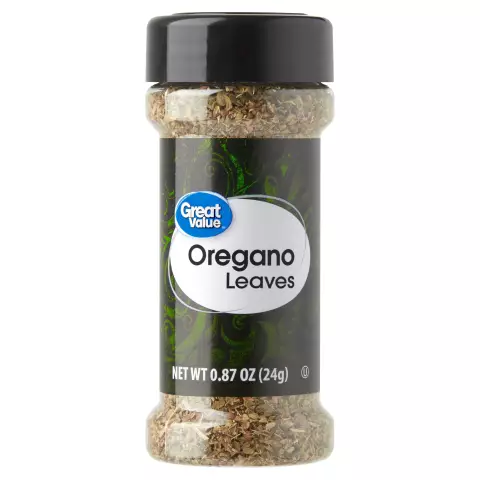- Author Rachel Wainwright [email protected].
- Public 2023-12-15 07:39.
- Last modified 2025-11-02 20:14.
Liquorice (licorice)
Licorice naked or licorice is a perennial herb that grows wild in the vastness of Italy, France, the North Caucasus, Siberia, Southeastern Europe, North Africa, as well as Western and Central Asia.
The ratio of BJU in the product

Source: depositphotos.com How to burn 375 kcal?
| Walking | 94 minutes |
| Jogging | 42 minutes |
| Swimming | 31 minutes |
| A bike | 54 minutes |
| Aerobics | 75 minutes |
| Household chores | 125 minutes |
Licorice belongs to the genus Licorice, the Legume family, grows preferably on hard black earth, clay, sandy and brackish soils. The plant has a thick woody rhizome, several erect stems, strewn with odd-pinnate leaves. The fruits of the licorice plant are brown, leathery beans with seeds. The flowering time of licorice is from June to August, the ripening of the fruits occurs in August-September.
Licorice is widely used in medicine, food and technical industries, and also as a foaming agent in the production of fire extinguishers. Many are familiar with licorice sweets - not only delicious, but also very healthy sweets.
Licorice plant: properties
The roots and rhizomes of the plant contain carbohydrates and related compounds - glucose, fructose, sucrose and maltose. Liquorice is rich in:
- Starch - up to 34%;
- Cellulose - up to 30%;
- Pectin substances;
- Organic acids - citric, succinic, malic, fumaric and tartaric;
- Essential oils;
- Triterpenoids;
- Resins;
- Steroids;
- Phenol carboxylic acids and their derivatives;
- Coumarins;
- Tannins - from 8.3 to 4.2%;
- Flavonoids;
- Higher aliphatic hydrocarbons;
- Alcohols;
- Higher fatty acids;
- Alkaloids.
The terrestrial part of the plant contains polysaccharides, carbohydrates, organic acids, saponins, lipids, nitrogen-containing compounds, vitamins, flavonoids, tannins, coumarins, glycestrone, essential oil and triterpenoids. Licorice essential oil contains aromatic compounds, alcohols, aldehydes, ketones, terpenoids, higher aliphatic hydrocarbons and higher fatty acid esters.
The beneficial properties of licorice for human health are due to the fact that it contains a large amount of vitamins of group B. Therefore, the use of licorice helps to regulate energy metabolism and the proper functioning of all organs and systems of the body, in particular the nervous system, promotes the synthesis of proteins and the production of insulin, as well as improves metabolism.
The medicinal properties of licorice were known 3000 years ago in China, the root of the plant is a natural remedy for coughs, and also has antiulcer, anti-inflammatory, expectorant and antispasmodic effects.
Uses of the licorice plant
In industry, the plant is used as a foaming agent, namely in metallurgy for froth flotation and in mixtures for filling fire extinguishers. Licorice is used in the manufacture of shoe polish, ink and ink, as well as in the textile industry for fixing paints.
In the vastness of Central Asia and the Caucasus, a decoction is made from the roots of licorice, which is used to dye felt and wool. In Japan, it is used in the production of nicotine-free surrogate cigarettes, and the world's tobacco corporations add it to add flavor and pleasant aroma to smoking, chewing and snuff tobacco. In Kyrgyzstan, licorice is used as a surrogate for tea. In ancient China, Tibet, Assyria, Egypt and Sumeria, licorice roots were used as a medicine for many diseases.
In Denmark and other Scandinavian countries, various sweets are prepared from licorice. On the shelves of candy stores in these countries, you can find licorice candies of various sizes and colors, lollipops, salty and sweet lozenges, chocolate, marmalade, chewing gum, and soft drinks. Here you can find not only sweet licorice sweets, but also salty, hot ones with chili pepper, and also with the taste of ammonium chloride.
Also in Denmark, they sell barley-licorice beer, licorice and menthol-licorice shots with vodka. Licorice candies with the scent of elder flowers are very popular, which not only have an unusual taste and aroma, but are also very useful.
In the food industry, the roots and rhizomes of the plant are used for better churning of egg whites, added to extracts and syrups, and also used as a sugar substitute and foaming agent in beer, soft drinks, kvass and tonic drinks.
Licorice is also used in the production of cocoa, coffee, halva, jelly, marshmallow, compotes, marinades, caramel, flour products and chocolate, in pickling cabbage, soaking apples and in processing fish. The plant is added to long tea and green tea, thereby obtaining a sweet drink with an unusual taste and aroma.

In medicine, licorice powder is used to create the base of tablets and to improve the smell and taste of drugs. Since the roots of licorice contain glycyrrhizic acid, it can be used by patients with diabetes mellitus.
In alternative medicine, licorice is used to treat impotence, cholelithiasis, rhinitis, nephritis, hypertension, angina pectoris, leprosy, prostatitis and prostate adenoma, a decoction from a plant in milk is used for whooping cough and in the treatment of lymphogranulomatosis.
Licorice or licorice is a plant widely distributed throughout the world, which is used in industry, cooking and medicine. It is rich in vitamins, flavonoids, carbons, essential oils, fructose, alkaloids and alcohols, which is why it has a positive effect on human health.
YouTube video related to the article:
Found a mistake in the text? Select it and press Ctrl + Enter.






